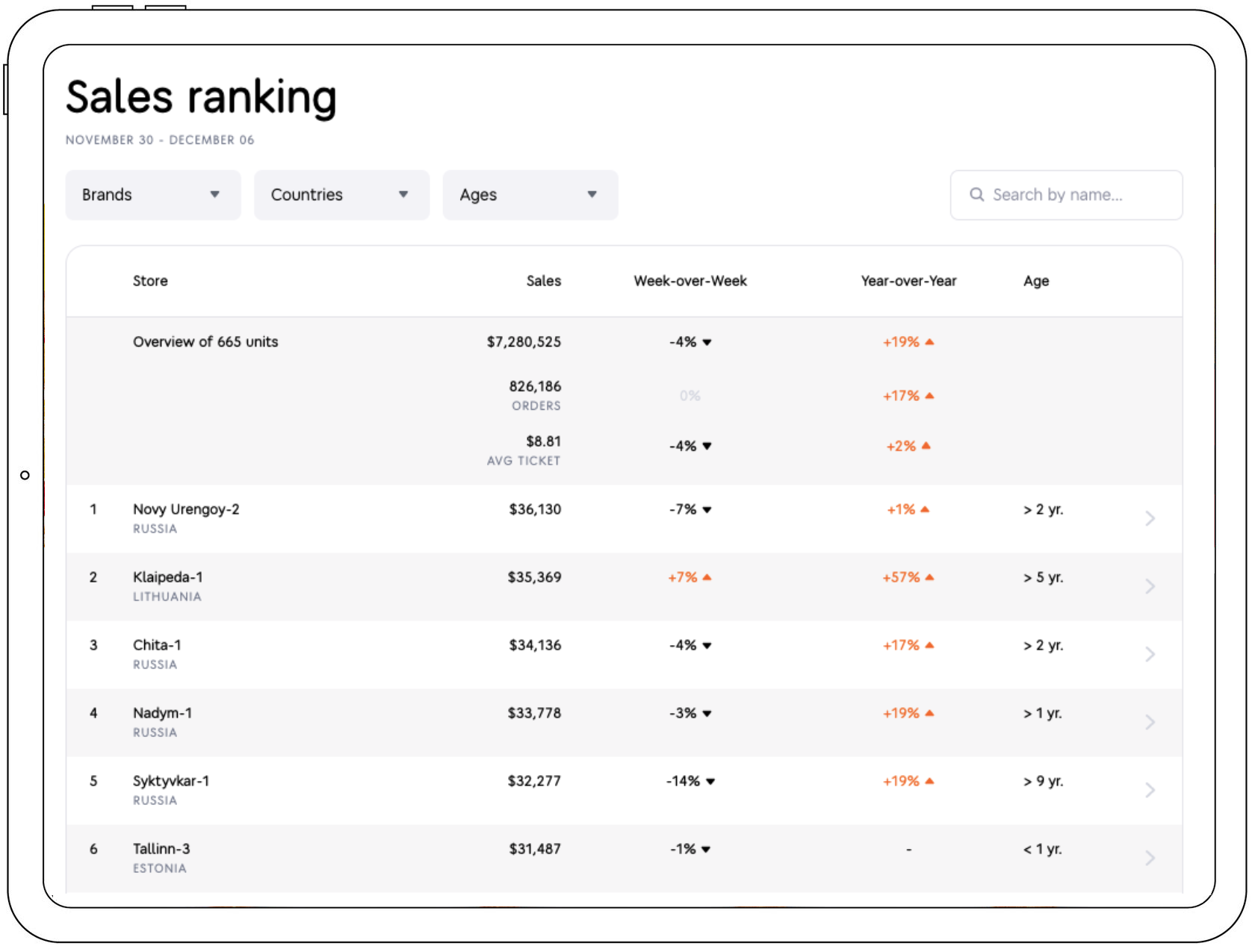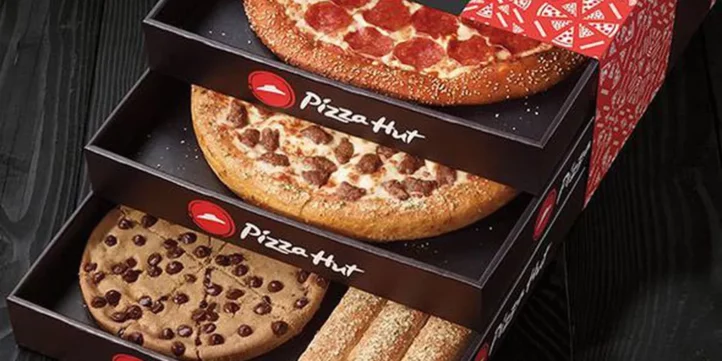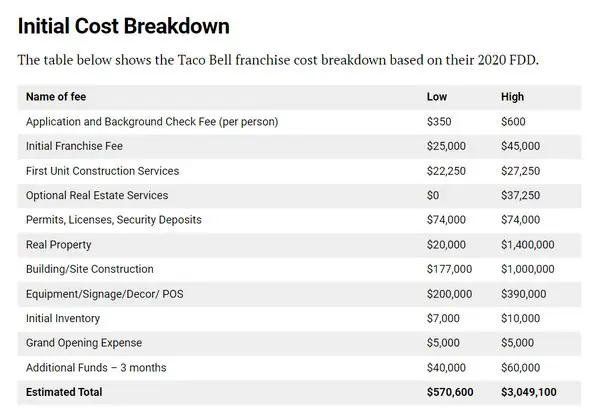The cost to start a Pizza Hut franchise ranges from $297,000 to $2,109,000. This includes opening inventory, equipment, and initial fees.
Embarking on a Pizza Hut franchise venture is a substantial financial commitment that requires in-depth planning and a clear understanding of the associated costs. This iconic brand has been a staple in the quick-service restaurant industry for decades, offering franchise opportunities that cater to various market sizes and investment capabilities.
Potential franchisees should consider expenses such as location, build-out costs, and the franchise model they want. With various formats, from traditional dine-in spaces to express delivery services, Pizza Hut provides multiple pathways for entrepreneurs eager to join the pizza industry. Aligning with such a well-established brand can offer significant support, resources, and brand recognition – crucial for budding franchise owners.
Credit: www.quora.com
Introduction To Pizza Hut Franchising
Imagine joining a global leader in the pizza industry. With a Pizza Hut franchise, you enter a world of culinary delights that customers have enjoyed for decades. A robust tradition and innovation make franchising with Pizza Hut a lucrative venture. Curiosity piqued? Here’s what you need to know.
Pizza Hut’s Market Presence And Growth
Pizza Hut is a giant in the industry. It boasts a worldwide reach with thousands of outlets. This popularity fuels continuous growth, making it a sought-after franchise opportunity. Yearly growth figures display a clear upward trajectory, assuring potential franchisees of their solid market stature.
Benefits Of Franchise Ownership
- Brand Recognition: Pizza Hut is a household name that ensures instant customer appeal.
- Comprehensive Support: Franchisees receive extensive training, marketing assistance, and ongoing operational help.
- Exclusivity: A Pizza Hut franchise brings exclusive territory rights, eliminating direct competition.
- Quality Control: Adherence to high standards ensures customer satisfaction and repeat business.
Franchise Model Basics
Entering the world of franchising involves understanding its core elements.
One popular choice is Pizza Hut, famous for its delicious pizza and extensive franchise network.
A Pizza Hut franchise can be lucrative but requires a significant investment.
Let’s dive into what it takes to start your Pizza Hut journey.
Understanding Franchise Agreements
A franchise agreement is a legal document that lays out the terms of the partnership.
It covers fees, operations, support, and the length of the franchising relationship.
All potential franchisees must review this document in detail.
The agreement outlines the responsibilities and expectations of both sides.
Types Of Pizza Hut Franchises
Pizza Hut offers various franchise models to suit different business goals.
Let’s explore the primary types here:
- Traditional Restaurant – Full-service with dine-in space.
- Delivery/Carryout – Focused on takeout and delivery services.
- Express Units – Smaller outlets commonly found in malls or airports.
| Type | Space | Services |
| Traditional | Large | Dine-in, Takeout, Delivery |
| Delivery/Carryout | Medium | Takeout, Delivery |
| Express | Small | Limited Menu |
Each model has its cost structure and requirements.
Initial Investment Costs
The journey to owning a Pizza Hut franchise starts with understanding the initial investment. Starting a franchise can be a significant venture, so it is essential to know each cost involved.
Franchise Fee Breakdown
Becoming a Pizza Hut franchisee involves a franchise fee. The fee is a payment for brand usage, training, and support. The exact amount varies based on the store type and location.
| Type of Store | Franchise Fee |
| Traditional | $25,000 |
| Delivery/Takeout | $20,000 |
Fees may change, so potential franchisees should confirm with Pizza Hut directly.
Infrastructure And Setup Expenses
Costs for building and setting up a Pizza Hut can add up quickly. These include real estate, construction, equipment, and signage. Listed below are typical expenses:
- Construction costs: $300,000 – $400,000
- Equipment and signage: $175,000 – $250,000
- Opening Inventory: $5,000 – $10,000
- Additional funds (3 months): $5,000 – $15,000
Remember, location and store size significantly affect these costs. The Pizza Hut franchising team can obtain detailed and updated cost estimates.
Ongoing Operating Costs
Ongoing Operating Costs are vital to running a Pizza Hut franchise. After the initial investment, these recurring expenses will determine your profitability. Understanding them is critical to successful operations. Let us break down these costs in more detail.
Inventory And Supply Chain
Your Pizza Hut will need a steady flow of ingredients and supplies. Inventory costs can fluctuate based on market prices for cheese, meat, and vegetables. You will also need to factor in packaging and logistics.
Effective management of the supply chain reduces waste and maximizes freshness. The cost of supplies might include the following:
- Food items: dough, toppings, sauces
- Non-food items: boxes, napkins, cleaning supplies
- Maintenance: equipment servicing and repairs
| Item Category | Estimated Monthly Cost |
| Food Supplies | $5,000 – $10,000 |
| Packaging | $500 – $2,000 |
| Equipment Maintenance | $300 – $1,000 |
Staffing And Training Expenditures
Employees are the backbone of your Pizza Hut franchise. Ongoing costs include salaries, benefits, and training to uphold brand standards.
Regular training ensures high-quality and consistent service. Costs include:
- Hourly wages: for cooks, servers, delivery drivers
- Salaries: for management staff
- Training: initial and ongoing for staff development
- Uniforms: which may need replacing or updating
Maintaining a trained, motivated staff contributes to a thriving Pizza Hut outlet.
Marketing And Advertising Fees
Understanding the costs tied to marketing and advertising is vital when opening a Pizza Hut franchise. It’s not just about initial fees and setup costs. Franchisees must allocate funds for ongoing brand promotion, both locally and nationally.
Local Marketing Expenses
When you join the Pizza Hut franchise family, local marketing efforts are crucial for attracting customers to your location. These expenses vary greatly and cover a range of activities:
- Local promotions and special offers
- Community events and sponsorships
- Online campaigns specific to your area
Franchisees should budget for these activities independently. They work in tandem with national campaigns to boost local presence.
National Advertising Fund Contributions
Beyond your local efforts, contributing to the national advertising fund is a requirement. This pooled resource finances large-scale campaigns, benefiting all franchisees:
| Contribution Type | Typical Percentage of Sales |
| National Advertising | Up to 4.25% |
| Brand Building | Varies |
These funds ensure Pizza Hut remains dominant in advertising on television, online, and other media outlets.

Credit: dodobrands.io
Real Estate And Location
The success of any Pizza Hut franchise is closely linked to its location. Strategic real estate decisions are critical. Finding the right spot is the first big step a franchisee must take. This decision can impact visibility, accessibility, customer traffic, and profitability.
Site Selection Criteria
Selecting the perfect site for a Pizza Hut franchise echoes the brand’s commitment to convenience and customer satisfaction. There are several factors to consider:
- Demographics: Does the local population fit Pizza Hut’s target market?
- Accessibility: How easy is it for customers to get to the location?
- Visibility: Can potential customers quickly see the restaurant?
- Competition: Are there similar restaurants nearby?
- Co-tenancy: What other businesses are in the area?
Lease Vs. Purchase Considerations
Deciding whether to lease or purchase a property is crucial. Each option has its benefits and drawbacks:
| Lease | Purchase |
| Lower upfront costs Flexibility to relocate No depreciation worries | Real estate as an investment More control over the property Potential for property appreciation |
Support And Training
Embarking on the Pizza Hut franchise path offers a comprehensive support and training program. This system is vital for success. It provides franchisees with the knowledge and skills needed for a thriving business. Let’s dive into the pre-opening support and ongoing training opportunities of investing in a Pizza Hut franchise.
Pre-opening Support Services
Pizza Hut ensures franchisees receive assistance from day one. The pre-opening support covers several crucial steps:
- Site Selection: Expert guidance in selecting the perfect location for your restaurant
- Restaurant Design: Access to Pizza Hut’s tried-and-tested design plans
- Equipment Ordering: Help with purchasing the right tools and equipment
- Vendor Relations: Introductions to approved suppliers for consistent quality
- Training: Detailed instruction for franchisees and their management teams
- Marketing Strategies: Strategies to capture your local market before the doors open
These support services ensure a smooth launch of your new Pizza Hut outlet.
Ongoing Training And Development
A Pizza Hut franchise is a dynamic business that requires continuous learning.
Ongoing training includes:
| Aspect | Details |
| Operational Excellence: | Regular updates on best practices for running your restaurant |
| Customer Service: | Training on delivering the best customer experience |
| New Products: | Education on the latest menu additions and how to introduce them |
| Food Safety: | Up-to-date information on maintaining high safety standards |
| Technology: | Guidance on utilizing the latest technology in the pizza business |
The training continues after the grand opening. Pizza Hut commits to the growth of each franchise.
Financial Performance And Profitability
Exploring a Pizza Hut franchise involves understanding costs and potential earnings. Investing in a Pizza Hut franchise is a significant financial decision. It’s essential to look at economic performance and profitability. This entails revenue potential and benchmarks. Evaluating profit margins and return on investment (ROI) is also vital. Below, we delve into these crucial aspects.
Revenue Potential And Benchmarks
Figuring out the revenue potential for a Pizza Hut franchise is vital. Industry benchmarks serve as a guide. Here’s what aspiring franchisees should note:
- Location is vital: High-traffic areas often report better sales.
- Market demand: Regional pizza consumption trends affect revenue.
- Operational efficiency: Streamlined operations can boost profits.
These factors all contribute to the revenue a franchise can expect to see.
| Factor | Impact on Revenue |
| Location | Direct link to sales volume |
| Marketing | Increases brand visibility and customer reach |
| Product Quality | Sustains customer loyalty and repeat business |
Evaluating Profit Margins And Roi
Understanding profit margins and ROI is critical when investing in a franchise. Profit margins give insight into operational efficiency. ROI measures success over time. Let’s take a closer look:
- Calculate initial investment versus ongoing costs.
- Analyze monthly financial statements for revenue and expenses.
- Assess the balance between cost control and quality service.
Profit margins typically improve with well-managed costs and solid sales. For Pizza Hut franchises, average profit margins can range considerably. Known variances depend on factors like location, size, and management.
Remember: A higher ROI indicates a more lucrative investment. Prospective franchise holders should aim for a positive ROI within a reasonable timeframe after opening.
Navigating Challenges
Understanding the cost of a Pizza Hut franchise includes more than just the initial fee. Potential owners face several challenges. From managing startup costs to sustaining operations, ownership is not for the faint of heart. Preparing for these hurdles with practical strategies and real-world insights is the key to success. Find out what it takes to surmount the obstacles of franchising with Pizza Hut and join the ranks of successful entrepreneurs.
Overcoming Common Hurdles
Prospective Pizza Hut franchisees often confront similar challenges:
- Funding: Securing the necessary capital requires a solid financial plan.
- Location: Choosing the right spot is crucial for customer traffic.
- Training: Properly training staff ensures high-quality service.
- Competition: Standing out among rivals demands an intelligent marketing strategy.
To tackle these, successful franchisees prioritize detailed research and preparation:
| Challenge | Strategy |
| Funding | Explore loans, investors, and personal assets. |
| Location | Analyse demographics and conduct market studies. |
| Training | Use Pizza Hut’s resources and mentorship programs. |
| Competition | Develop unique offerings and local marketing. |
Case Studies Of Successful Franchises
Real-life examples inspire and instruct potential franchise owners. Let’s examine some success stories:
- City Center Comeback: A downtown location flourished by focusing on lunch specials for workers.
- Suburban Success: Family deals and community engagement made this franchise a neighborhood favorite.
- College Town Win: Late-night hours and student discounts made this venue a hit among the young crowd.
These cases highlight the importance of understanding your target market and adapting to their needs. Each successful franchise had clear goals and a detailed business plan, ensuring a path to profit despite obstacles.

Credit: www.efinancialmodels.com
Conclusion: Is It Worth It?
Deciding to invest in a Pizza Hut Franchise is a big step. Upfront costs can be hefty. You consider fees, equipment, and property leases. It’s not just the starting price. Think about ongoing costs, like royalty fees and marketing contributions, too. Your decision hinges on analyzing these expenses against potential income.
Balancing Costs And Potential Gains
Investing in a Pizza Hut franchise requires understanding the balance sheet. Initial investments are just the beginning. Expect to manage variable costs like labor and inventory. Your profit depends on location, management, and market competition. Look closely at Pizza Hut’s performance history. Remember, a firm brand name often leads to a steady customer base.
Final Considerations For Potential Franchisees
Before you sign up, reflect on your business goals. Are you ready to commit to the hands-on operation of a fast-food franchise? Assess your comfort by following Pizza Hut’s strict operating guidelines. Due diligence is crucial. Speak with current franchise owners to get insights into day-to-day challenges and rewards. Examine the franchise agreement with a legal expert. This helps avoid future surprises.
Remember, success in franchising goes beyond passion for pizza. It demands business understanding, dedication, and resilience. Wise investors look at the entire picture. They estimate long-term returns against the upfront payment and running costs. Choosing to invest in Pizza Hut is a personal decision. Your findings and gut feeling should guide you.
Frequently Asked Questions On How Much Pizza Hut Franchise Cost
How Much Does A Pizza Hut Owner Make A Year?
Depending on location and management, a Pizza Hut franchise owner’s annual income varies, typically between $80,000 to $120,000.
Are Pizza Franchises Profitable?
Pizza franchises can be profitable due to high demand and brand recognition. Success depends on location, management, and market competition.
How Much Is A Domino Franchise?
A Domino’s Pizza franchise costs between $119,950 and $461,700, including a $25,000 franchise fee. Initial investment can vary based on location and store type.
How Much Does Mcdonald’s Franchise Cost?
The initial cost for a McDonald’s franchise ranges from $1,008,000 to $2,214,080, including a $45,000 franchise fee. Ongoing fees also apply.
Conclusion
Venturing into the world of franchising with Pizza Hut offers promising prospects. The costs vary, depending on location and store type. Proper budgeting and financial planning are crucial to ensure a successful launch. Considering the investment, potential franchisees can pave their way to a slice of the pizza market’s success.
Embrace the opportunity for growth with Pizza Hut today.

As the author of the “Ultimate Pizza Guide: Recipes, Tips & Secrets Revealed,” I’m dedicated to sharing my love for pizza and empowering others to create delicious homemade pizzas with ease. Join me on a journey to uncover the secrets to perfecting your pizza game!



